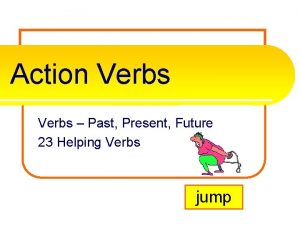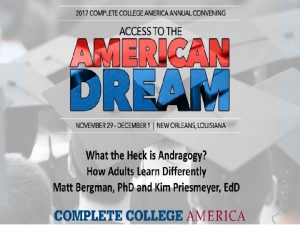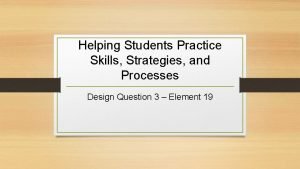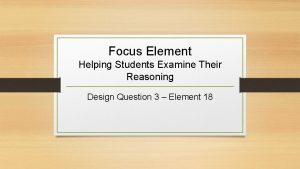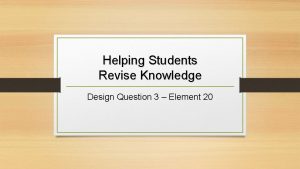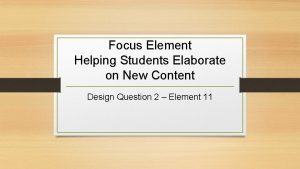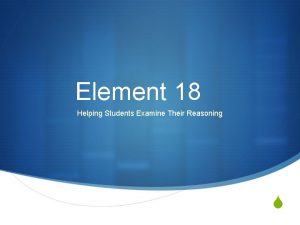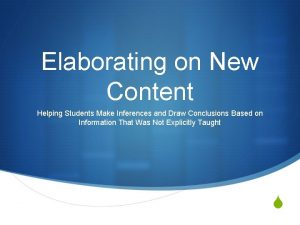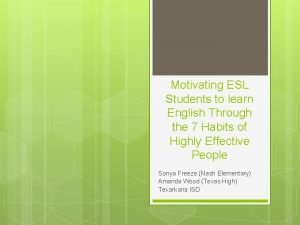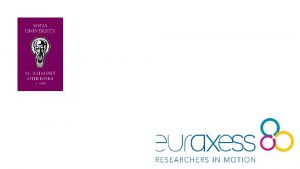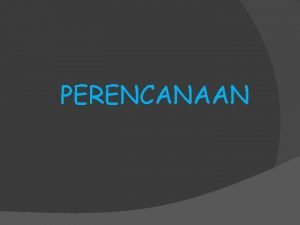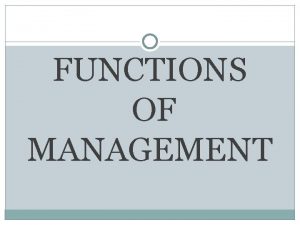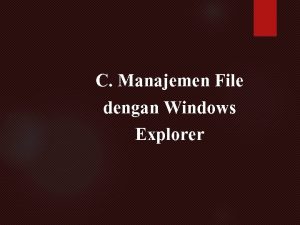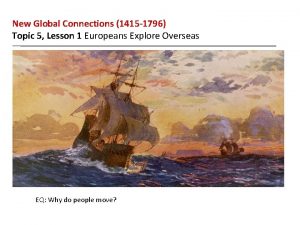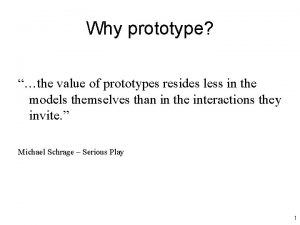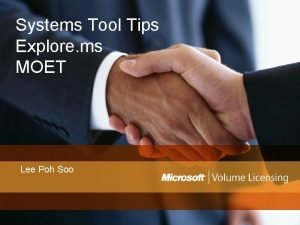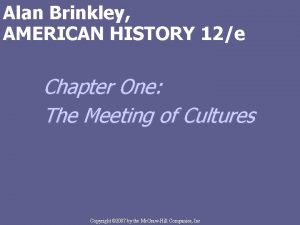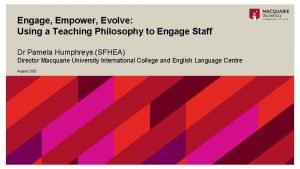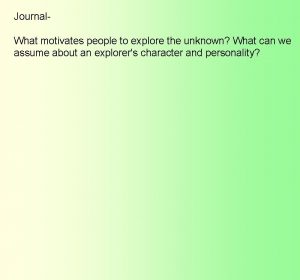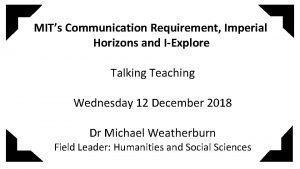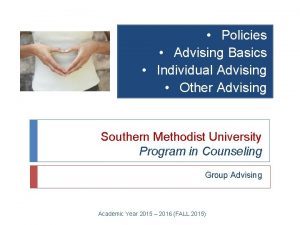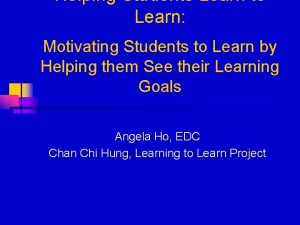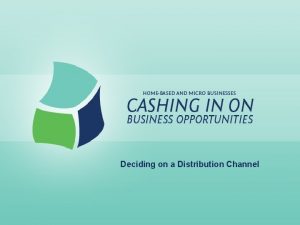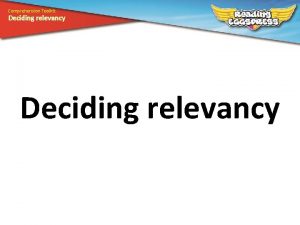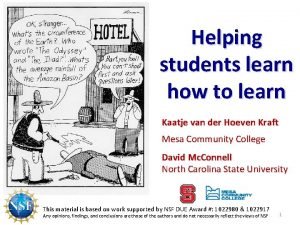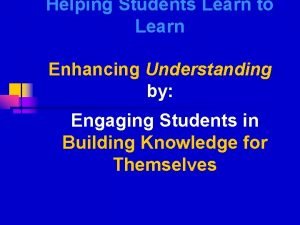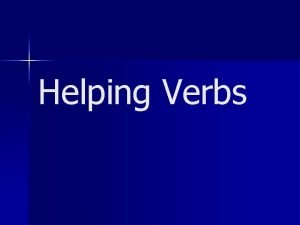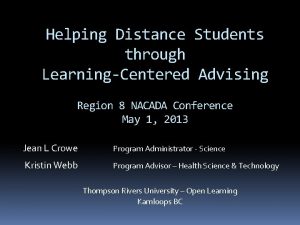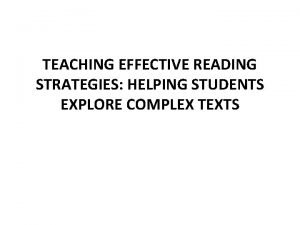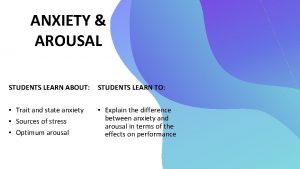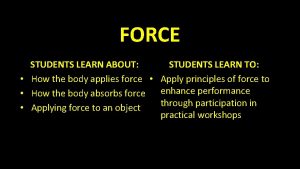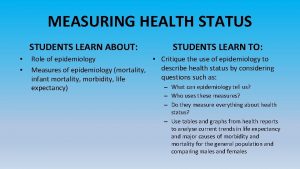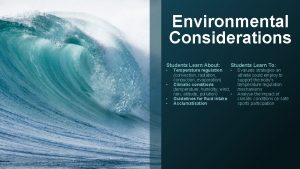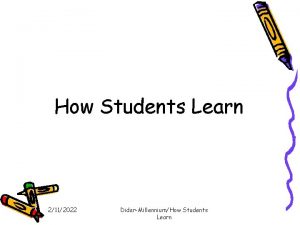Advising to Learn Helping Re Deciding Students Explore





























- Slides: 29

Advising to Learn: Helping Re. Deciding Students Explore Majors Systematically through a For. Credit Course Margo Coates Stephanie Elliott Sarah Howard coates. 92@osu. edu elliott. 302@osu. edu howard. 933@osu. edu

Session Outline • Definition and characteristics of re-deciding students • Why we decided to teach a course • Details of the course • Outcomes of the course • Discussion • Questions

Overview: About Ohio State • Ohio State University is a large, public institution with 200+ majors and 100+ minors • New First Year Freshman (Columbus campus) in AU 2016: 7, 885 • Total undergraduates (Columbus campus) in AU 2016: 45, 831 • First Year Retention Rate 93%-94% • Graduation Rate • 4 year 58%-59% • 6 year appx 83%-84%

Admissions at Ohio State • Major Blind Admissions • Students are first admitted to the university, then evaluated for admission to competitive programs • Pre-majors • Students are admitted as pre-majors in competitive programs and must then do a secondary application after completing prerequisite courses • Most major admissions processes happen after the first or second year • Students can move from one college at Ohio State to another • OSU allows students to apply to a major regardless of current major/pre-major • Students not admitted to their first choice major can move to any major for which they meet eligibility requirements

Re-deciding Students • Our working definition: ▫ A student who previously was declared in another major/college ▫ May be a first-year student, but more often upperclass student ▫ Some choose to be re-deciding; others need to reconsider based on lack of progress in declared major (program dismissal)

Re-deciding Student Needs • Addressing existing credits • Established GPA ▫ Possibly limits major options • Extended time to degree ▫ Possible increased cost • Heightened concern about career ▫ Frequently moving from a career-directed major (e. g. Engineering, Nursing, etc. ) https: //pixabay. com/p-608304/? no_redirect

Extrinsic versus Intrinsic Factors • Extrinsic ▫ Parents encouraged students to go to school, but no particular major goal/support ▫ Lack of structure for how to explore majors ▫ GPA requirements ▫ Major requirements (Firmin and Mac. Killop, 2008) https: //pixabay. com/en/the-structure-lined-pattern-1034946

Extrinsic versus Intrinsic Factors • Intrinsic ▫ Difficulty in making decisions about long-term plans ▫ Lack of awareness of own interests ▫ Struggles with finding “best fit” major (Firmin and Mac. Killop, 2008) http: //www. thebluediamondgallery. com/tablet/d/decision-making. html

Re-deciding Students • History at OSU ▫ Academic Alternatives Advising Program established in late 1980’s to advise students with “advanced credit hours who were in the process of changing academic or vocational directions” (Gordon and Steele, 1992)

Re-Deciding Students • More recently ▫ Students have access to “Major Changer” information through OSU’s LMS ▫ Some information available on our department web site for 2 nd and 3 rd year students specifically ▫ Workshops offered in various campus venues about the topic ▫ Spring 2015: First offering of EXP 2000

Why EXP 2000 • What was the need ▫ Campus visibility ▫ More structure to re-deciding process for students who want/need it ▫ 1 credit hour (7 -week) class for students who may need to drop competitive course but remain full time • How we advertised the course ▫ Advisors ▫ In program dismissal letters

Course Design • Course goals and objectives ▫ Sample syllabus available as an online handout �Assessing personal interests and strengths �Exploring alternate OSU major options �Reference available resources to explore careers • Course approval process

Course Objectives • Students will assess their personal interests and strengths to help them determine the right fit and declare an appropriate major. • Students will be able to determine alternate OSU majors that are attainable based on their academic performance and fit with their academic interests and strengths. • Students will be able to reference available resources to explore careers associated with majors of interest.

Course Overview • 7 Recitations ▫ Intro ▫ Majors & Careers ▫ Interests/Holland Code ▫ Information Gathering ▫ Major Feasibility �Time to degree �Competitive admissions ▫ Resume Building ▫ Degree Planning https: //pixabay. com/en/school-paper-binder-education-934051

Course Overview Recitation 1: Introduction Recitation 2: Majors & Careers Major corresponds directly with career Major is broad

Course Overview Recitation 3: Interests and Holland Code I R Doers C Organizers Persuaders E Thinkers Creators Helpers S A Recitation 4: Information Gathering

Course Overview • Recitation 5: Major Feasibility ▫ Time to degree ▫ Competitive Admission • Recitation 6: Resume Building

Course Overview • Recitation 7: Degree Plan

Major Assignments • Holland Code Assessment & Major Elimination Game ▫ http: //go. osu. edu/expholland • Feasibility Study • Informational Interview ▫ Senior student/Alumnus in major of interest ▫ Advisor/Faculty member in major of interest ▫ Professional in career of interest • Degree Plan

Pre-Assessment Top Reasons for Re-deciding 25 20 15 10 5 0 Program dismissal Dissatisfaction with from previous major Change in career goals # Students New interest in different major(s) Other (write in)

Pre-Assessment Top Concerns for Redeciding (students chose top 3) 35 30 25 # Students 20 15 10 5 0 Take longer to graduate Won't be happy in the major I choose Choice of major will limit range of career opportunities Other

Declared Major vs. Major Feasibility Topic Different Major 25% Same Major 43% Related Major 32%

Changes in major post EXP 2000 Dismissed 4% Exploring 14% Same Major 26% Different Major 56%

Did this class help you make progress towards declaring a new major? No, 1 Yes, 29

Post-Assessment • What did you get out of this class? ▫ “The exercises and assignments guided me into learning more about the majors OSU has to offer, and made me think realistically about what each major would require, and the careers they would lead to. ” ▫ “This class gave me a structured procedure to help me narrow down my interests in majors and career paths. ” ▫ “How to systematically do research about the major that I am interested in. ”

Activity/Group Discussion • Who are your students that could benefit? • Why might students be re-deciding at your institution? • What are the options for re-deciding students at your institution? • How could this apply to your institution? ▫ ▫ Workshop Online modules Course Advising modules/tools

Questions

References Firmin, M. W. & Mac. Killop, L. M. (2008). Frequent major changing: Extrinsic and intrinsic factors. NACADA Journal, 28(2), 5 -13. Gordon, V. N. & Steele, G. E. (1992). Advising major-changers: Students in transition. NACADA Journal, 12(1), 22 -27. Hagstrom, S. J. , Skovholt, T. M. & Rivers, D. A. (1997). The advanced undecided college student: A qualitative study. NACADA Journal, 17(2), 23 -30. Milsom, A. & Coughlin, J. (2015). Satisfaction with college major: A grounded theory study. NACADA Journal, 35(2), 5 -14.

Contact Us • Margo Coates, coates. 92@osu. edu • Stephanie Elliott, elliott. 302@osu. edu • Sarah Howard, howard. 933@osu. edu • http: //exploration. osu. edu
 Is would a helping verb
Is would a helping verb The art and science of helping adults learn
The art and science of helping adults learn Helping students practice skills, strategies, and processes
Helping students practice skills, strategies, and processes Learning target
Learning target Helping students examine their reasoning
Helping students examine their reasoning Helping students revise knowledge
Helping students revise knowledge Helping students elaborate on new content
Helping students elaborate on new content Marzano element 18
Marzano element 18 Helping students elaborate on new content
Helping students elaborate on new content Learn to learn
Learn to learn Motivating students to learn english
Motivating students to learn english Deciding consensual vs top down
Deciding consensual vs top down Deciding on the global marketing organization
Deciding on the global marketing organization Deciding to marry asl story
Deciding to marry asl story List the four reasons jem and dill give for deciding
List the four reasons jem and dill give for deciding Perencanaan menurut newman
Perencanaan menurut newman Planning is deciding in advance what is to be done
Planning is deciding in advance what is to be done The first favorite novel of rizal
The first favorite novel of rizal Fungsi manajemen explore
Fungsi manajemen explore New global connections unit test
New global connections unit test What drives people to explore
What drives people to explore Explore evolve validate prototype
Explore evolve validate prototype Explore.ms
Explore.ms What did amerigo vespucci explore
What did amerigo vespucci explore Central idea of ozymandias
Central idea of ozymandias Marius explore la cellule
Marius explore la cellule Explore engage empower
Explore engage empower 2-4 explore compound interest
2-4 explore compound interest What motivates people to explore the unknown
What motivates people to explore the unknown Clcc imperial
Clcc imperial
